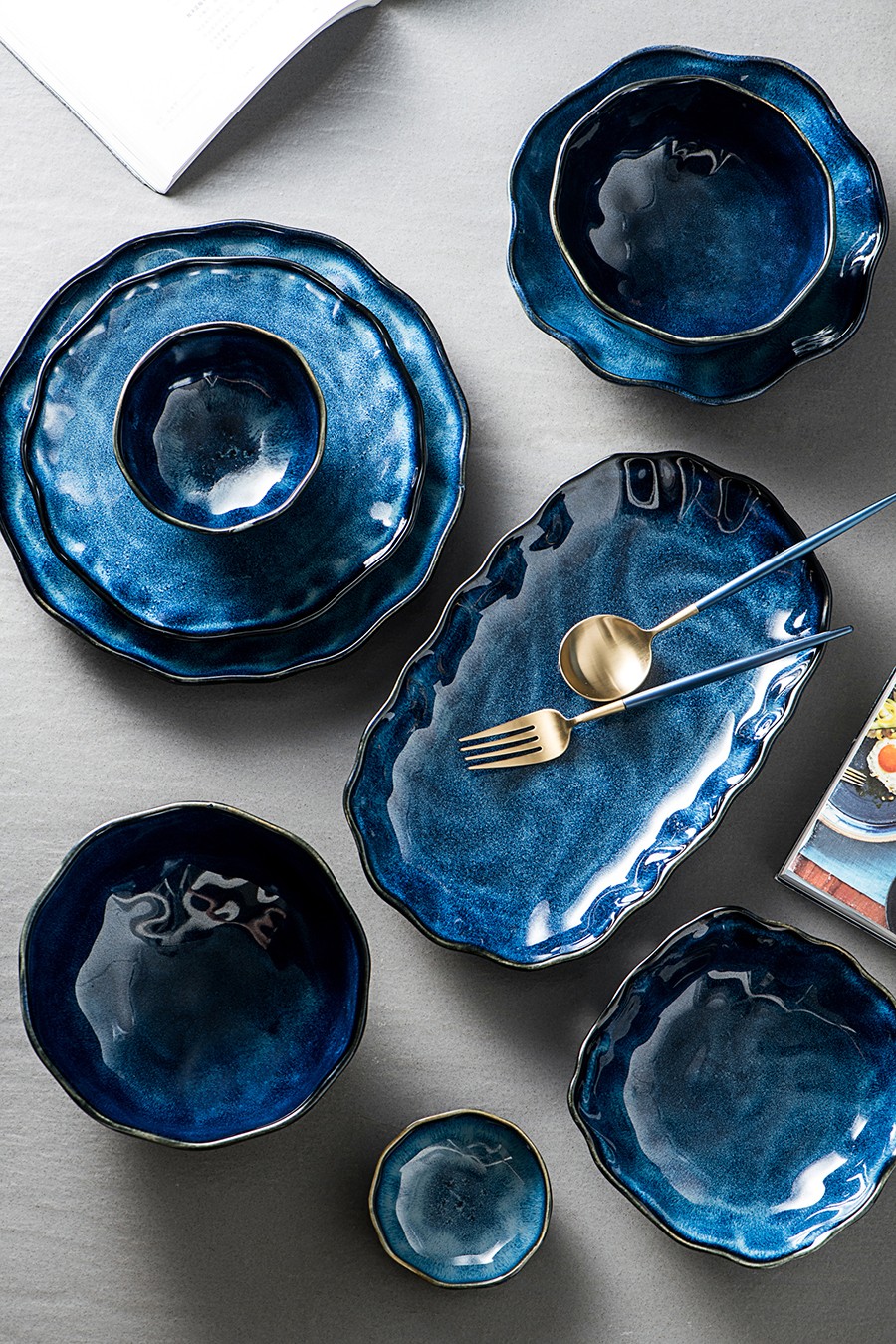The making process of blue ceramic tableware
1. Select raw materials: The raw materials for ceramic production generally include clay, porcelain stone, quartz, feldspar, etc. In order to make blue tableware, it is also necessary to choose suitable pigments and glazes.
2. Mix raw materials: Mix the raw materials together according to a certain proportion, add an appropriate amount of water, and stir evenly to make ceramic mud.
3. Molding: The ceramic clay is molded according to the design requirements, usually by manual molding or machine molding. Common forming methods include drawing, extrusion, pressing, etc.
4. Drying: Place the formed ceramic products in a well-ventilated environment and let them dry naturally. It usually takes a few days to ensure that the product is completely dry.
5. Firing: Put the dried ceramic products into the kiln for firing. The firing temperature and time depend on different raw materials and product requirements. Generally, the firing temperature will be between 1000°C and 1300°C.
6. Glaze coating: After the firing is completed, apply the glaze on the surface of the ceramic product. The purpose of coating glaze is to increase the gloss of the product and protect the surface. To make blue tableware, a blue glaze is required.
7. Second firing: After coating the glaze, put the ceramic product back into the kiln for the second firing. The temperature and time of this firing are usually lower than the first firing, in order for the glaze to melt and fuse with the surface of the product. This process is called "enamel firing".
8. Finished product inspection: After the second firing is completed, the product is taken out and subjected to procedures such as appearance inspection and quality inspection. If there is a flaw, it needs to be repaired or eliminated.
9. Packaging and sales: Finally, the products are packaged and put on the market for sale.
In summary, making ceramic blue daily tableware is a complex process that goes through multiple steps to get the perfect product. Every step requires strict quality control to ensure that the quality of the final product meets the standard.

